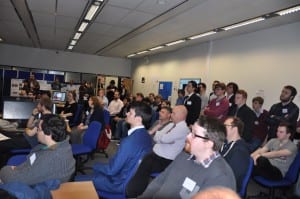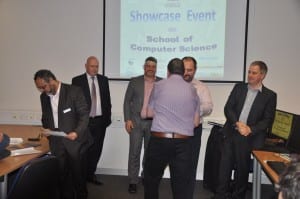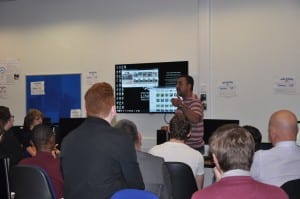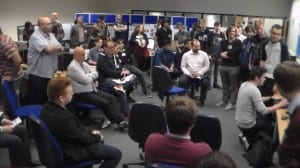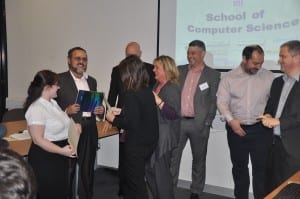The monthly PGRs Research Presentations was held on Wed. 14th October, 2pm, Room MC3108.
This session we had the following presentations:
| Title: “Modelling LGMD2 Visual Neuron System“. | Title: “Compressed video matching: Frame-to-frame revisited” | |
|
By: Qinbing Fu |
By: Saddam Bekhet |
|
| Abstract: Two Lobula Giant Movement Detectors (LGMDs) have been identified in the lobula region of the locust visual system: LGMD1 and LGMD2. LGMD1 had been successfully used in robot navigation to avoid impending collision. LGMD2 also responds to looming stimuli in depth, and shares most the same properties with LGMD1; however, LGMD2 has its specific collision selective responds when dealing with different visual stimulus. Therefore, in this paper, we propose a novel way to model LGMD2, in order to emulate its predicted bio-functions, moreover, to solve some defects of previous LGMD1 computational models. The mechanism of ON and OFF cells, as well as bio-inspired nonlinear functions, are introduced in our model, to achieve LGMD2’s collision selectivity. Our model has been tested by a miniature mobile robot in real time. The results suggested this model has an ideal performance in both software and hardware for collision recognition. | Abstract: This presentation is about an improved frame-to-frame (F-2-F) compressed video matching technique based on local features extracted from reduced size images, in contrast with previous F-2-F techniques that utilized global features extracted from full size frames. The revised technique addresses both accuracy and computational cost issues of the traditional F-2-F approach. Accuracy is improved through using local features, while computational cost issue is addressed through extracting those local features from reduced size images. For compressed videos, the DC-image sequence, without full decompression, is used. Utilizing such small size images (DC-images) as a base for the proposed work is important, as it pushes the traditional F-2-F from off-line to real-time operational mode. The proposed technique involves addressing an important problem: namely the extraction of enough local features from such a small size images to achieve robust matching. The relevant arguments and supporting evidences for the proposed technique are presented. Experimental results and evaluation, on multiple challenging datasets, show considerable computational time improvements for the proposed technique accompanied by a comparable or higher accuracy than state-of-the-art related techniques. | |
|
|
||
|
|
